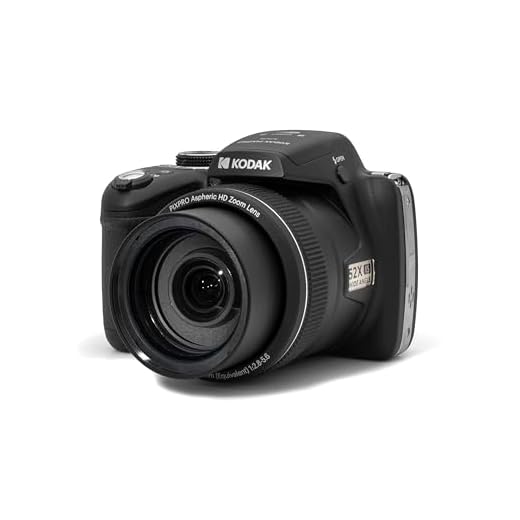




FPS stands for frames per second, a term commonly used in the world of digital photography and videography. It refers to the number of individual frames that a camera can capture in one second. This metric is crucial for determining the quality of motion capture and the overall smoothness of video footage.
When it comes to digital cameras, FPS plays a significant role in determining how well a camera can capture fast-moving subjects or scenes. A higher FPS rate results in smoother and more detailed footage, making it ideal for action photography or filming dynamic sequences.
Understanding the significance of FPS in digital cameras can help photographers and videographers make informed decisions when selecting equipment for their creative projects. By knowing how FPS affects the quality of their work, they can achieve the desired visual results with precision and clarity.
Understanding fps in Digital Cameras
When it comes to digital cameras, the term “fps” stands for frames per second. This metric indicates how many individual frames a camera can capture in one second of video recording or continuous shooting mode.
The fps value is crucial for determining the camera’s ability to capture fast-moving subjects or create smooth, high-quality video footage. A higher fps rate allows for more fluid motion and sharper images, especially when recording fast-paced action scenes or sports events.
Key Points to Consider:
- Higher fps values are ideal for capturing fast-action scenes with clarity and detail.
- Lower fps rates may result in choppy or blurry footage, especially for moving subjects.
- Some digital cameras offer adjustable fps settings to accommodate different shooting scenarios.
Definition and Importance of fps
FPS stands for frames per second, which represents the number of individual frames or images captured by a digital camera in one second. In photography and videography, FPS is a crucial parameter that determines the smoothness and quality of the captured footage.
The FPS rate directly impacts the fluidity and realism of motion in videos. Higher FPS rates result in smoother videos with less motion blur, making them ideal for capturing fast-moving subjects or action scenes. On the other hand, lower FPS rates may lead to choppy or jerky footage, especially when recording dynamic scenes.
Importance of FPS in Digital Cameras:
- Smoothness of Motion: Higher FPS rates provide smoother motion in videos, enhancing the viewing experience.
- Capture of Fast Action: A higher FPS allows digital cameras to capture fast-moving subjects with greater clarity and detail.
- Editing Flexibility: Having a higher FPS rate provides more flexibility during post-processing, allowing for slow-motion effects or frame-by-frame analysis.
- Compatibility with Displays: FPS plays a role in ensuring compatibility with different display devices, especially when viewing high-quality videos.
Factors Affecting fps in Cameras
When it comes to digital cameras, the frames per second (fps) is a crucial factor that determines the camera’s ability to capture fast-moving subjects. Several factors can affect the fps of a camera:
1. Sensor Size: The size of the camera sensor plays a significant role in determining the fps capability. Larger sensors generally have better light sensitivity and can capture more frames per second.
2. Processor Speed: The processing power of the camera’s image processor affects how quickly it can process image data and store it to the memory card. A faster processor can handle higher fps rates.
3. Resolution: Higher resolution images require more processing power and storage space, which can impact the fps performance of a camera. Lowering the resolution can increase the fps rate.
4. Autofocus System: The speed and accuracy of the camera’s autofocus system can also affect the fps performance. A faster autofocus system can keep up with fast-moving subjects and ensure sharp images at higher fps rates.
5. Lens Quality: The quality of the lens attached to the camera can impact the fps performance. Higher-quality lenses with wider apertures can allow more light to reach the sensor, enabling faster shutter speeds and higher fps rates.
By considering these factors, photographers can choose a camera that best suits their needs for capturing fast-action shots with high fps capability.
How to Adjust fps Settings
Adjusting the fps settings on your digital camera can significantly impact the quality of your video recordings. Here are some steps to help you adjust the fps settings:
- Access the camera’s menu by pressing the menu button.
- Look for the video settings or recording settings option in the menu.
- Find the fps setting and select the desired frame rate (e.g., 24fps, 30fps, 60fps).
- Adjust the fps setting based on your desired video quality and the motion you want to capture.
- Save the changes and exit the menu.
Remember that higher fps settings can result in smoother motion but may require more storage space. Experiment with different fps settings to find the right balance for your recordings.
FPS vs. Shutter Speed
When discussing digital cameras, it’s important to understand the difference between frames per second (FPS) and shutter speed. While both of these factors are crucial in capturing high-quality photos and videos, they serve different purposes and have distinct effects on the final outcome.
Frames Per Second (FPS)
FPS refers to the number of frames a camera can capture in one second. This measurement is particularly important when shooting videos, as it determines the smoothness and quality of motion in the footage. A higher FPS means more frames are captured per second, resulting in smoother and more detailed videos. For example, a camera that can shoot at 60 FPS will produce smoother footage compared to one shooting at 30 FPS.
Shutter Speed
On the other hand, shutter speed refers to the amount of time the camera’s shutter remains open to capture an image. A faster shutter speed will freeze motion and reduce motion blur, while a slower shutter speed will allow more light to enter the camera and create a sense of motion in the image. Adjusting the shutter speed can help you achieve the desired effect in your photos, whether you want to freeze action or create a sense of motion.
fps in Video Recording
When it comes to video recording, fps (frames per second) is a crucial factor that determines the quality and smoothness of the video footage. The fps rate refers to the number of individual frames or images that are displayed in one second of video. A higher fps rate results in smoother and more realistic motion in videos. Common fps rates in digital cameras include 24 fps, 30 fps, and 60 fps.
For example, videos shot at 24 fps are typically used in film production, giving a cinematic look and feel. On the other hand, videos recorded at 60 fps are smoother and are often preferred for capturing fast-moving action, sports events, or video games. The choice of fps setting depends on the desired look and feel of the video content.
| fps Rate | Usage |
|---|---|
| 24 fps | Cinematic look and feel, film production |
| 30 fps | Standard video recording, TV broadcasting |
| 60 fps | Smooth motion, fast action scenes, sports |
Choosing the Right fps for Your Needs
When selecting a digital camera, one of the key specifications to consider is the frames per second (fps) capability. The fps refers to how many images the camera can capture in one second and is crucial for capturing fast-moving subjects or creating smooth video footage.
Factors to Consider:
1. Intended Use: Determine your primary use for the camera. If you plan to shoot sports or action sequences, a higher fps rate is essential to capture fast movements without blurring.
2. Video Requirements: If you intend to shoot videos, consider the fps needed for smooth playback. Higher fps rates result in smoother motion in videos.
3. Resolution: Higher resolution images may require a higher fps to ensure smooth continuous shooting without lag.
| fps Range | Recommended Use |
|---|---|
| 1-3 fps | Basic photography, still subjects |
| 4-6 fps | Everyday photography, casual shooting |
| 7-10 fps | Sports photography, action shots |
| 11+ fps | Professional sports, wildlife photography |
Consider these factors when choosing the right fps for your needs to ensure you capture the best possible images and videos with your digital camera.
fps in Action Photography
When it comes to action photography, fps (frames per second) is a crucial factor to consider. A higher fps allows you to capture fast-moving subjects with more detail and precision. With a higher fps, you can capture multiple frames in quick succession, increasing your chances of getting the perfect shot.
For sports photography or wildlife photography where subjects are constantly on the move, a camera with a higher fps can make a significant difference. It allows you to freeze the action and capture those split-second moments with clarity.
Having a camera with a high fps also gives you more flexibility in post-processing. You can choose the best frame from a series of shots or create dynamic sequences by combining multiple frames.
Overall, fps plays a crucial role in action photography, helping you capture fast-paced scenes with precision and clarity.
FAQ
What is fps in digital cameras?
FPS stands for frames per second. It refers to the number of individual frames or images that a camera can capture in one second. A higher FPS value means that the camera can capture more frames in a second, resulting in smoother and more detailed motion in videos or sequences of images.
Why is FPS important in digital cameras?
FPS is important in digital cameras because it determines the quality and smoothness of videos or sequences of images captured by the camera. A higher FPS value means that the camera can capture more frames in a second, resulting in smoother and more detailed motion. This is especially important for capturing fast-moving subjects or creating high-quality slow-motion footage.
How does FPS affect video quality in digital cameras?
The FPS value directly affects the quality of videos captured by digital cameras. A higher FPS value results in smoother motion and more detail in the video, especially when capturing fast-moving subjects. Lower FPS values may lead to choppy or less detailed videos, particularly in fast-paced action scenes.
What is a good FPS value for digital cameras?
The ideal FPS value for digital cameras depends on the specific requirements of the user and the type of content being captured. For most standard video recording purposes, a frame rate of 24 to 30 FPS is considered sufficient. However, for capturing fast action or creating high-quality slow-motion videos, a frame rate of 60 FPS or higher is recommended.
Can you adjust the FPS in digital cameras?
Many digital cameras allow users to adjust the FPS settings to customize the frame rate based on their preferences or the requirements of the content being captured. Some cameras offer a range of FPS options, while others may have fixed frame rates. It is important to check the camera’s specifications and settings to see if FPS adjustment is possible.









